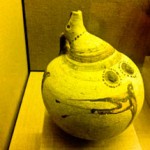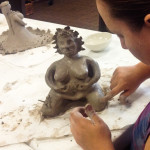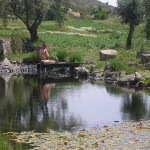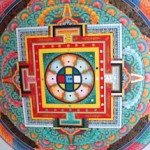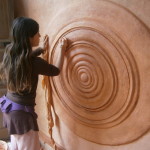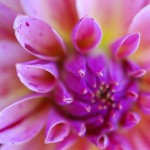Meditation & Art = Magic

A Meditative Artist is, first of all, a spiritual seeker; their one and only goal is spiritual development and anything that can support the spiritual journey is regarded positive and facilitating. While regular practice of Meditative Art is highly beneficial, following a disciplined daily schedule is crucial.
Practice, practice, practice
Real progress and continuous development is rooted in practice, repetitive and yet ever new. This growth can be seen as the shape of a spiral, seemingly taking us back to the starting point, yet endlessly uplifting us.
Routine practice of Meditative Art is facilitating to the spiritual practitioner in more than one way. Beyond the uniqueness of applying art as a means for spiritual growth, which provides us an opportunity to connect to the divine while expressing creativity, the maintenance of a regular and routine schedule with dedication and persistence cannot be overrated.
Part of what we gain when learning Meditative Art is the importance of practice. We practice when it is the scheduled time to practice, whether or not we “feel like it”, whether we are inspired or dull. Our momentary feeling and state becomes irrelevant and minor. Minimizing the importance given to our preferences and moods helps us to expand beyond superimposed limitations while developing will power and endurance. This also strengthens our trust in ourselves, in our word and in our abilities.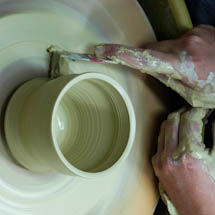
Living Spirituality
It is important to clarify that dedicated, routine practice and schedule means that we live in a harmony with the flow of life and flow of change. We remain flexible and open minded, fresh and full of life in each and every day and practice. We learn to understand that things don’t always go as planned; we accept and adjust when things work out differently to what we expected, and we remain focused to return back to our routine as soon as possible.
If we aim at real spiritual progress, we must agree to go beyond likes and dislikes, changing petty emotions and impulses; but this is nothing to be underestimated. It is not simple nor is it easy for us to agree to change, since all our life we have learned to identify ourselves with what we love and hate.
Willingness to Change
“This is how I am, I can’t just change the way I am! I’m like this. I like/dislike and that’s the way it is, you want me to lie, to pretend and act? You want to change me? This is the way it is and that’s that, I was born this way, this is me, take it or leave it, you can’t change a person, this is just the way I am…”
…This can be a very normal monologue that we may have with ourselves or with anyone else, showing very clearly our basic understanding and our resistance to change. Change is the very nature of this world, and it is due to fear that we resist change. We want things to stay the way they are, no matter how bad they are, because we fear it could be worse.
Agreeing to change is the first, and usually the hardest, part of personal process. Being open and inviting towards change and welcoming it as it comes is the primal effort needed towards transformation. As long as we resist, no one can help us -but when we are open, it seems as though the whole world is arranging itself in support. “If we close all the doors and windows, how can we blame the sun for not shining upon us” (Amma).
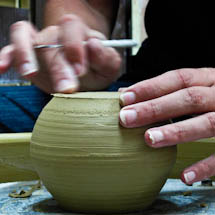
Accepting the phenomenon of change is the basic understanding needed to enjoy life. Realizing that everything is subdued to constant change is one of the most important understandings of Buddhism and of spirituality in general. If we resist change, we are resisting life. If we enjoy the phenomenon of change, we can enjoy each day, each moment and each stage in our life. We can observe the play and act with detachment, knowing it is all momentary. Trying to hold on leads to building emotional attachment, is it the source of a bottomless pit of mental and physical diseases and illnesses all born out of fear.
Going Into the Unknown
We are all on a continuous journey into the unknown; naturally, fear arises in us, our only choice (if we have any,) is what to do when fear arises – do we react or look straight into its core? If our fear is real, we can act accordingly and listen to our inner wisdom’s advice, but, usually, our fears are unreal and they are only a projection of our worst nightmares.

The Real Enemy & Friend Within
Our real enemy and real friend both live inside us; it is who we listen to that makes the difference. As long as we feed our negative voices and thoughts by paying attention to them and applying their advice, we are helping make more holes in our already sinking ship. Yet, if we empower our real friend and guiding light that is calling for us inside, we are on our way towards our beautiful future and real love. Real love is free and magical; it is divine and it is waiting for us.
The direct experience of Meditative Art practice
When we bring these realizations into our Meditative Art practice, they become a real and direct experience. Moment to moment, we are focused on remaining in the presence while allowing ourselves to surrender. Our one and only aim is to remain in tune, deeply rooted in our inner space, and yet open. We learn, not only to connect, but to actually be, be free and present, being the love that we are. It is not for nothing that it is a cliché, for the truth is nothing new and yet ever fresh and eternally magical.
